When our founder first started using LinkedIn back in 2012, he had just sold his last business and was looking for a way to build up his personal brand as a business advisor. He knew generating media exposure was a great way to do that, so he set out holding meetings with a few PR agencies to help get his name out there.
That’s until one day he got an email from a friend where he learnt that in fact 94.2% of editors and journalists are actually on LinkedIn. Not happy with the ideas and strategies the agencies had pitched him, Alex decided to go it alone.
Following the same step-by-step process we’re going to share with you in this blog, within a matter of 6 months not only did he manage to build a network of over 250 contacts in the media, but he got featured in over 50 publications. And he did all this without sending out a single press release or spending a cent on PR. 🙏
Oh, and throughout this process he managed to land some key relationships where he ended up writing for some of the biggest publications around the world including Huffington Post, Entrepreneur, Business Insider and many others.
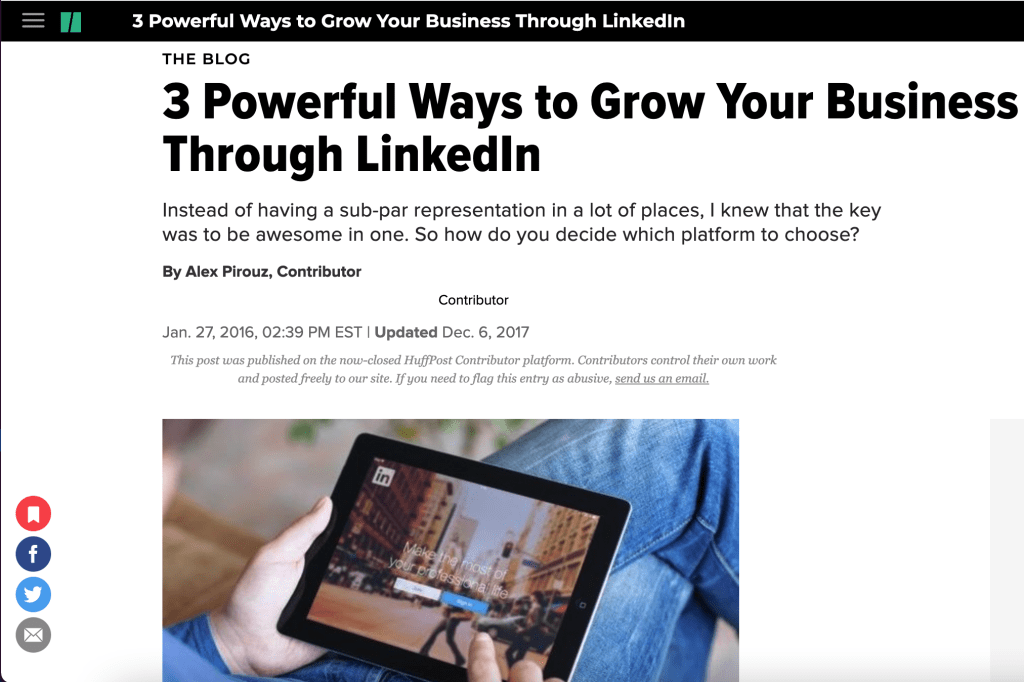
So, how did he do it? Well, sit back, grab a coffee, relax and get your notepad out. We’re going to share the entire strategy with you step by step.
Okay, so first things first, he made a list of the publications he wanted to be featured in. When doing this, he looked at those that were well known and others more specific to his industry.
That way, not only is he getting his name out there, but he’s also making sure that he gets in front of the right audience. 👌 So take a second now and come up with a list of at least 5-7 publications you want to be featured in.
Once you’ve done this, visit each one of those publications and start looking for editors and journalists to connect with. When doing this, bear in mind that generally speaking journalists are easier to develop a relationship with compared to editors, so maybe aim to connect 80% of the time with them and the other 20% with editors.
For example, let’s say you run a tech company and one of the publications you wanted to get featured in is Entrepreneur. All you need to do is go to that publication and see if there is a relevant section for your industry, such as Tech. 👇
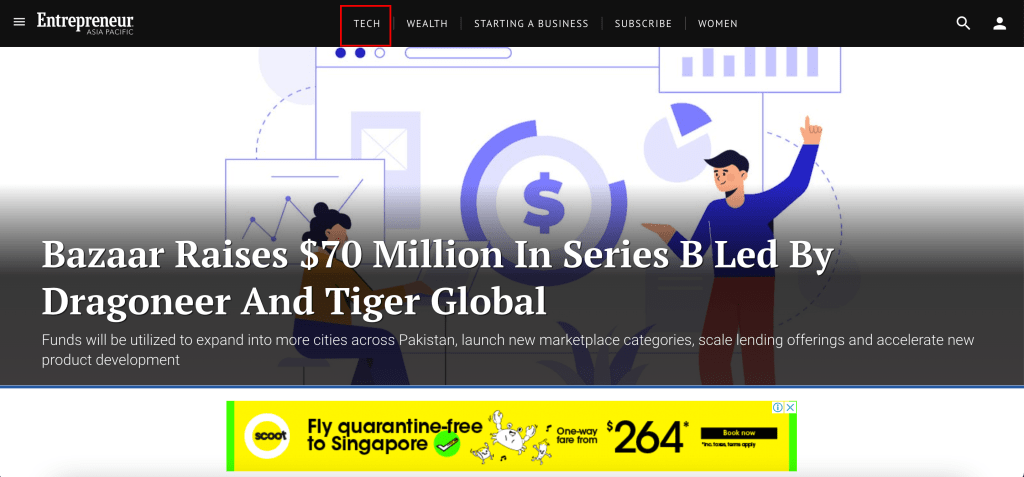
If you don’t find a relevant category, don’t worry. There is another way, if you have a Sales Navigator subscription you can search for journalists and editors using the ‘Company’ and ‘Title’ field.
You can even select whether you want them to be second or third degree, as well as their location. Now to find the right journalist who covers your specific area you may need to use keywords within your search too like ‘Tech’, ‘Technology’.
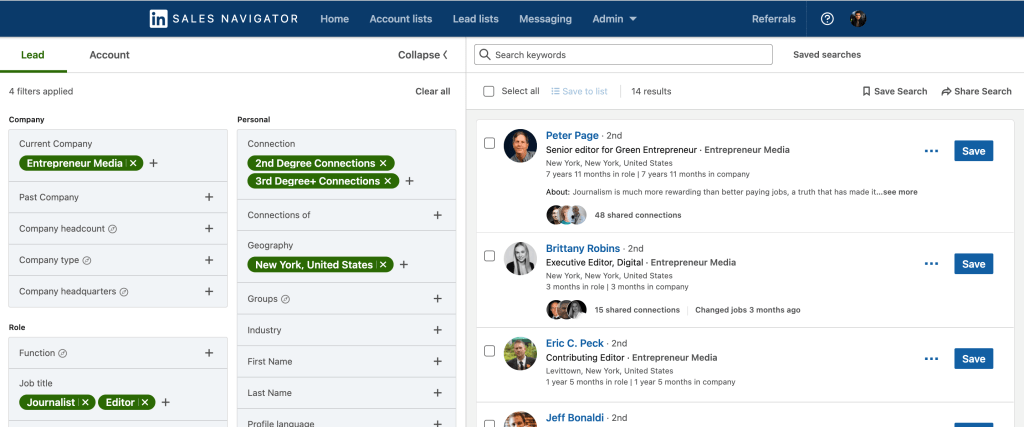
For the sake of this example, given Entrepreneur magazine actually has a technology section, let’s look at the steps you should take next. When you click through to that section, you’ll see a bunch of articles published by journalists that are relevant.
Underneath each news piece, you should see the name of the journalist who’s written it. Simply open up each article up in a new tab. 👇
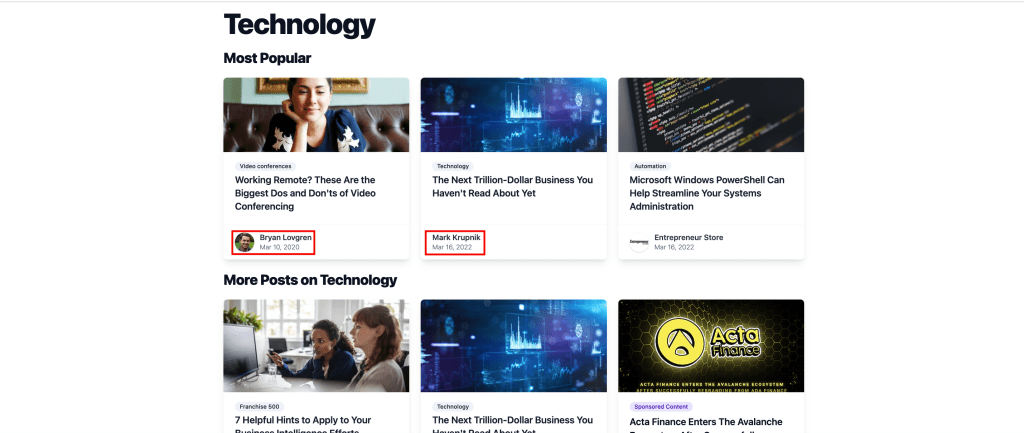
From here, have a quick scan of the article to see what it’s about, then copy and paste the name of the journalist, login to LinkedIn and paste it into the search bar.
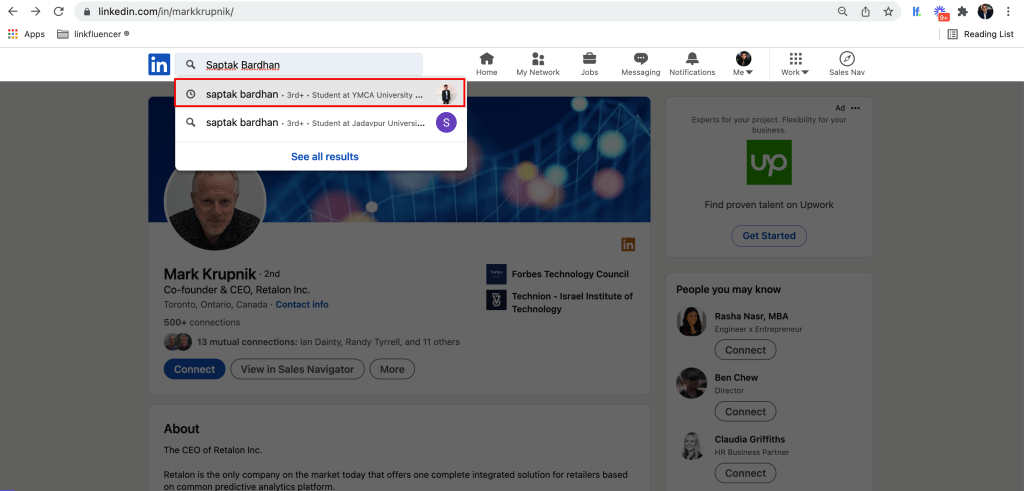
If their name is not unique, you may see a number of profile matches appear. Go through each one to see which one has referenced that they, in fact, write for this publication.
Then, your next move is to send them a personalised connection invitation. Now, before we show you how to do that, there are a few things you need to bear in mind if you really want to turn these connections into media opportunities.
First and foremost don’t pitch your idea to them right away, you’re reaching out to connect and develop a relationship with them. Do you know how many times journalists and editors are pitched at by business per day? A LOT!! Instead, find ways to be of service, give first without any expectation that you’ll receive later, and watch magic happen. 👊
When Alex first started using this strategy, one journalist he had reached out to responded asking for help regarding an article he was writing that was totally unrelated to his area of expertise. This journalist was looking to interview a few bakeries in Manly (beautiful beach in Sydney, Australia) around customer service and the importance of local marketing.
Not only was this not an area Alex wanted to be featured on, but he didn’t know any bakeries in Manly that he could potentially introduce to this journalist. But that didn’t stop him. In the spirit of service, he picked up the Yellow Pages and contacted a number of bakeries about the opportunity of being featured in Sydney Morning Herald.
Long story short, he managed to get a hold of 4 bakeries, who later contacted the journalist for an interview. Within the next 3 months of this article going live, not only did he develop a great relationship with this journalist, but he managed to get featured in 6 of his articles.
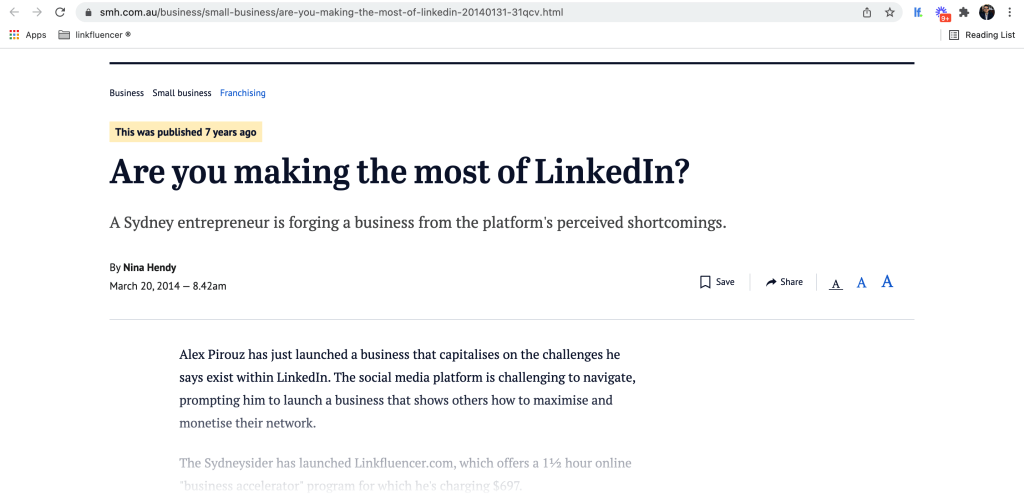
This shows how powerful this strategy can be if you just approach each connection with the view of building a long-term relationship and not just after a quick win. Because in order for you to succeed in any relationship, you first need to find problems that the other person is facing so that you can be the solution to their challenges.
And when it comes to the media, they all face 3 main challenges. They’re:
1️⃣ Sick and tired of going through press releases
2️⃣ Very time poor
3️⃣ On strict deadlines
And always in desperate need of key experts with commentary for their articles.
Knowing this your goal should be to find a way to be of value to them. One way of doing this is introducing them to people in your network. Okay, so now that we’ve got that out of the way, let’s look at how to best reach out with an invitation to connect.
First of all make sure it’s personalised. There’s nothing worse than getting a blanket message with a request to connect. Not only is this not effective, it’s no way to introduce yourself to someone, especially a person who’s influential in the media industry.
Instead, personalise your message by referencing their article, so they have context as to why you’re reaching out to them. Again, remember to stay away from pitching your story or business. It could be something as simple as this.
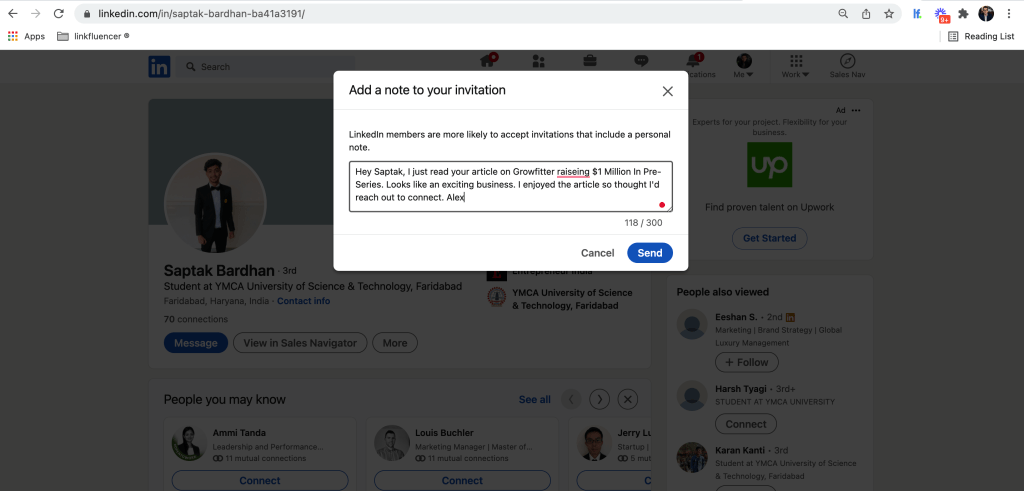
Once you’ve sent the invite, follow the same process and repeat it over and over again until you’ve finished for the day. Bear in mind that there is a 100 connection limit per week on LinkedIn.
If you do this process well, you should be getting around 30-35% of journalists and editors accepting your invite. When they accept your invite, you should receive a message in your LinkedIn or Sales Navigator inbox.
Remember to log in to LinkedIn each day and respond to each and every one so that you don’t leave them hanging for too long. Good luck with your campaign, we look forward to seeing you on the cover of Time magazine. 🙌


We're celebrating the launch of Jayla by giving our first 500 customers access to our VIC club. As a 'Very Important Customer' you won't just feel special, you'll get notified of the release first and have the price of your subscription fixed for life.
On top of all that you'll get priority support and an invite to an exclusive live masterclass with our founder Alex Pirouz. This is strictly limited to only 500 VIC's available.
We’re celebrating the launch of Jayla by giving our first 500 customers access to our VIC club. As a ‘Very Important Customer’ you get access to Jayla weeks before the public, price of your subscription fixed for life, priority support and an exclusive live masterclass.
Fill out your name and email to be in the know.